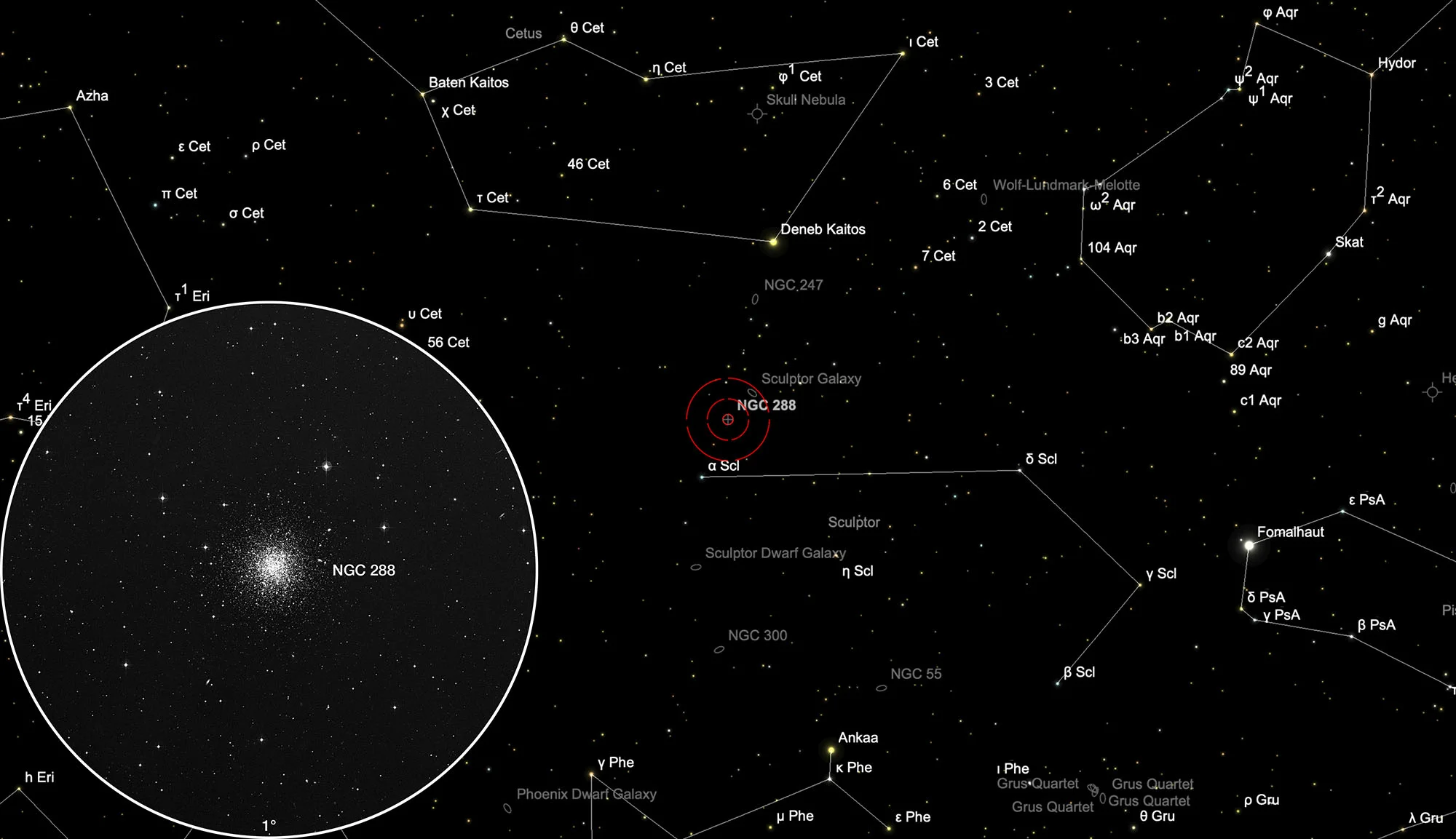Globular Cluster NGC 288

History
The globular cluster NGC 288 was first sighted on 27 October 1785 by the German-British astronomer William Herschel with its 18.7 inch reflector. The cluster is a very loose association with a Shapley – Sawyer concentration class of X. [196, 277]
Physical Properties
Like most globular clusters, NGC 288 is in an elliptical orbit around the galactic centre, from which it is currently at a distance of 12 kpc (approx. 39'000 light years). The distance to us is only 8.5 kpc (approx. 27'000 light years). This orbit takes him through the galactic bulge and every time he passes it he loses stars. This creates a tidal tail on both sides of the cluster, which, however, due to the orbit and the position of the cluster in the apocentre, can hardly be made out from the earth. [369, 370, 371]
The different colours and brightnesses of the stars that can be seen in Fig. 1 tell the story of how they developed differently within the cluster. The many weaker points of light are normal stars with low mass, which fuse hydrogen to helium in the same way as our sun does. The brighter stars are divided into two classes: The yellow are red giants, which are in a later stage of their life and are now bigger, cooler and brighter. The bright blue stars are even more massive stars and are powered inside by the fusion of helium. Stars in a globular cluster all form at about the same time from the same gas cloud and are usually very old: 10 to 12 billion years. It is assumed that the stars in less dense clusters can develop differently. [368]
| Designation | NGC 288 |
| Type | GCL (X) |
| Right Ascension (J2000.0) | 00h 52m 45.5s |
| Declination (J2000.0) | -26° 35' 51" |
| Diameter | 13 arcmin |
| Visual magnitude | 8.1 mag |
| Metric Distance | 8.900 kpc |
| Dreyer Description | globular, B, L, lE, st 12…16 |
| Identification, Remarks | WH VI 20; h 74=2354; GC 162; ESO 474-SC37; GCL 2 |
Finder Chart
The globular cluster NGC 288 is located in the constellation Sculptor, about 2 ° southeast of the well-known Silver Dollar (NGC 253). Due to its southern location of -26.5° declination, it is only clearly visible in Central Europe from June to March.
Visual Observation
400 mm Aperture: NGC 288 is a large, beautiful globular cluster that resolves into twinkling individual stars all the way to the centre and is worth a detour after the silver dollar NGC 253. — 400 mm f/4.5 Taurus Dobsonian, Glaubenberg, 6. 11. 2020 Bernd Nies
